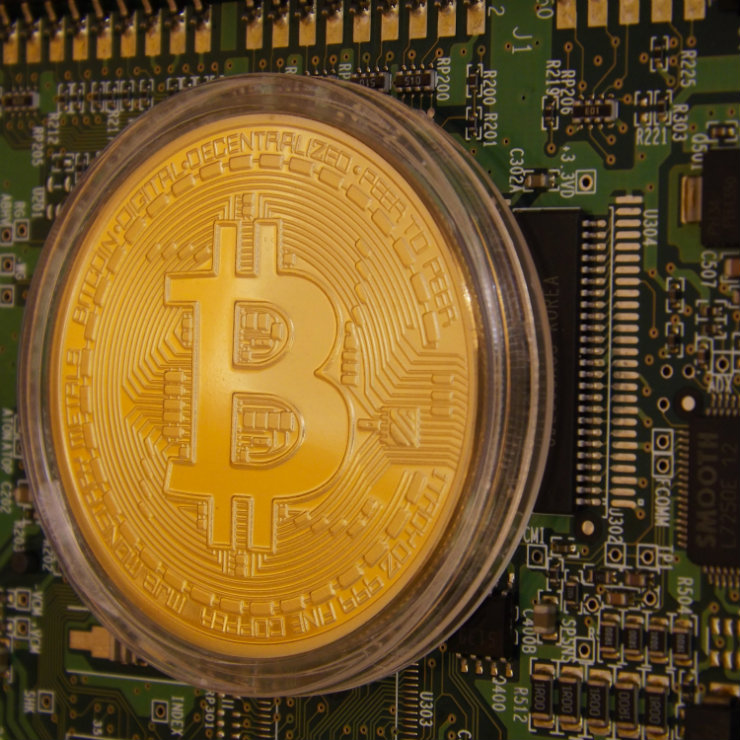
CE Financial Observer: Let’s start with futurology – are you able to imagine that one day PLN will be replaced by the NBP Coin?
Adam Tochmański: NBP Coin? NBP has been issuing coins for a long time.
This is how virtual currencies are usually named.
It’s the world of cryptocurrencies that uses such a naming standard. Central banks will never issue cryptocurrencies, only real currencies, at the very most in a digital form. This example, however, perfectly shows the differences between cryptocurrencies and real ones. A real currency has all the features of money, i.e. it isexchangable, a store of value, a measure of value, and is universally accepted, because it is issued by the central bank. Cryptocurrencies only have some of these characteristics and are not backed by any state institution. The most famous of the cryptocurrencies, bitcoin, initially conceived as a peer to peer payment system, has actually become a speculative instrument, and to a lesser and lesser extent is a mean of payment. It is a mistake to equate such cryptocurrencies with real currencies, such as PLN, USD or GBP.
In the future might even real currencies adopt this electronic form of record?
For many years, real currencies had had not only the form of banknotes and coins, but also the electronic form, such as the so-called bank money, i.e. digital entries in accounts maintained by the banks. The question of form is therefore a secondary matter. For centuries, money has been adapting to changing needs, including the convenience of users, and has taken various forms. Currently, in the cash form it is a coin or a banknote, and in the non-cash form, an electronic record.
It would be an entirely different thing, however, for central banks to issue commonly available money in digital form as an alternative to cash. For the time being, such ideas have not been implemented, but it does not mean that such discussions and relevant analyzes are not being carried out by central banks. These are, however, only theoretical considerations.
Paper Swedish krona may disappear.
Sweden is the closest to moving from theory to practice. We should recall, however, that this is a an almost cashless society. In Sweden cash accounts for less than 3 per cent of the M1 money supply aggregate, while the average in the European Union is 15-16 per cent, and in Poland it is 21-22 per cent.
NBP together with the Polish Financial Supervision Authority have launched a website and an entire educational campaign related to cryptocurrencies. Why should we beware of them?
We should be careful not to confuse them with real currencies. Cryptocurrencies are one thing, while real currency, issued by the central bank in the form of cash, and even non-cash money created in commercial banks, sometimes described as fiat money or fiduciary money, are an entirely different thing. Investing in cryptocurrencies may involve various types of risk.
But there are opinions that fiduciary money without coverage, for example, in gold, does not differ much in its purely conventional nature from bitcoin.
Such opinions result either from bad will or from ignorance. Money, even in the cashless form, is backed by the state, because the state regulates, controls and guarantees it. Yes, non-cash money is created in commercial banks, but these banks are regulated by the state and they are supervised by the Polish Financial Supervision Authority. In turn, NBP monitors the supply of money and uses the tools defined by law to control it. There is also the Bank Guarantee Fund, which protects all deposits held in banks and credit unions up to EUR100,000. This network of state institutions means that the PLN we see on our bank accounts is real money which enjoys public trust. I will stress once again – bitcoin, litecoin or other are something entirely different from PLN. There are no institutions backing them.
NBP and the Polish Financial Supervision Authority write about five types of risk related to cryptocurrencies.
First of all, this concerns the risk of loss as a result of theft. All money, including bank money, can be stolen, but when we deposit money in a bank, we conclude an agreement with that institution for its safekeeping timely return. Even a possible bank robbery does not result in our loss, but only a possible loss for the bank itself, because the bank has to fulfill that agreement and give us our money back. This is true even in the case of a cyberattack on a bank, unless we helped the cyber theft ourselves. The wallets of virtual currencies are exposed to much more dangerous cyberattacks, because in practice such theft means an irretrievable loss. They have already taken place in several countries, including Poland. Recently nearly 5,000 bitcoins disappeared from the wallet of a platform registered in Slovenia, and no one knows what happened to them.
Can’t bitcoins be stored safely?
No, and this is associated with the second risk – the cryptocurrency trading platform may fail or be closed overnight, and even if we find out who was running it, it may be very problematic to pursue our claims before a Polish court, let alone before a foreign one. Since they are not bank deposits, funds held in “virtual” currencies are not guaranteed by the Bank Guarantee Fund and will not be paid back, as in the case of a bank going bankrupt.
There is also the risk associated with the lack of universal acceptance.
Yes. Bitcoin, which was conceived as a payment system, is becoming less and less suitable for making payments. Fewer and fewer stores accept it due to the very high price volatility. As a store owner, if I face the prospect that the amount paid by a customer in bitcoins could lose 20 per cent of its value within the same day (denominated in the USD), this creates a real risk of loss for me. By failing to fulfill the essential properties of money, i.e. failing to serve as a measure of value, cryptocurrencies are increasingly ceasing to be a means of payment.
How important is the issue of high price volatility?
When NBP and the Polish Financial Supervision Authority issued their joint warning in July 2017, the bitcoin price barely exceeded USD2,000. At the end of 2017 the price reached USD20,000. This is probably the greatest speculative bubble ever. Of course, it is not known when it will burst, but we are warning that it is very likely that severe losses will be incurred in the future.
Finally, there is the risk associated with the possibility of deliberate fraud. At this point, we are warning against investing funds in pseudo-currencies, which were created on the wave of popularity of the initial cryptocurrencies and which were conceived from the very beginning as a financial pyramid, aimed at defrauding as many participants as possible. Such scams often involve the guise of advanced technologies that are yet to be created, and sometimes the names of famous celebrities are used, often without their knowledge or without their awareness as to what they are participating in. The Polish Office of Competition and Consumer Protection has issued several statements warning consumers against such scams and has also filed reports to the prosecutor’s office.
How would you explain such spectacular increases in bitcoin prices in relation to real currencies? Isn’t this a vote of no confidence for central banks?
Bitcoin prices are influenced by a combination of many factors. Firstly, the supply is limited to 21 million units, which launched this race to earn as much as possible at the earliest possible stage. There are almost 17 million bitcoins now, but obtaining them is becoming more and more expensive, and more and more energy intensive. Secondly, there is growing demand, which in conditions of limited supply is driving the price of bitcoin up. Recently we’ve been reading about very high bitcoin demand mainly in Asia. Initially this was happening in China and Japan, and now in South Korea and Vietnam. Almost 80 per cent of the new turnover comes from the Asian countries, where many people would like to get rich quickly. Some experts are also adding, probably not without reason, that bitcoin may be used for money laundering and is sometimes used as a means of settlement in criminal activities.
Maybe bitcoin should have simply be banned? Why has the intervention been limited to an educational campaign?
Bitcoin has been banned in individual Asian and South American countries, but in European countries such solutions have not yet been recognized as a good model for Europe. There is also a third way between total prohibition and complete lack of regulation, i.e. partial regulation, which could soon take place in the European Union and in Poland, along with warnings from the state institutions combined with an educational campaign. Cryptocurrencies were not banned in the European Union, but for example the European Central Bank, the Deutsche Bundesbank, the Banque de France and the financial supervision institutions warned users about the risks associated with cryptocurrencies and informed them that they were not currencies issued by the central bank.
NBP and the Polish Financial Supervision Authority have been clear and concise: they say no to bitcoin, and yes to the mechanism behind its operation, known as blockchain. What specific applications of this technology of distributed registry could we expect?
For the time being, it is difficult to provide specific examples of implementations, because in many areas these are still pilot projects and solutions. In my opinion, the blockchain technology could be used especially in areas where we are dealing with some sort of registers or databases. I know that the National Depository for Securities (KDPW) is considering using blockchain to handle electronic voting at general shareholders’ meetings. Meanwhile banks believe this technology may have the potential for implementation as a so-called durable medium that is required for the effective delivery of correspondence to a customer. (Read more)
Could blockchain eventually threaten their core business? One can imagine that with the development of this technology, the National Depository for Securities as a place used for storing information on the purchased securities will not be needed because that will be solved by a blockchain key.
This isn’t really such a simple decision that we could get rid of existing institutions because they are regulated and supervised, and have a high level of legal responsibility for secure operation. We cannot entrust everything to computers, dispersed users and very fuzzy responsibility without a central party which we could trust. It seems to me that until blockchain technology is mature, verified and all doubts are eliminated, its application in major systems performing clearing or settlement of financial transactions will not happen soon.

